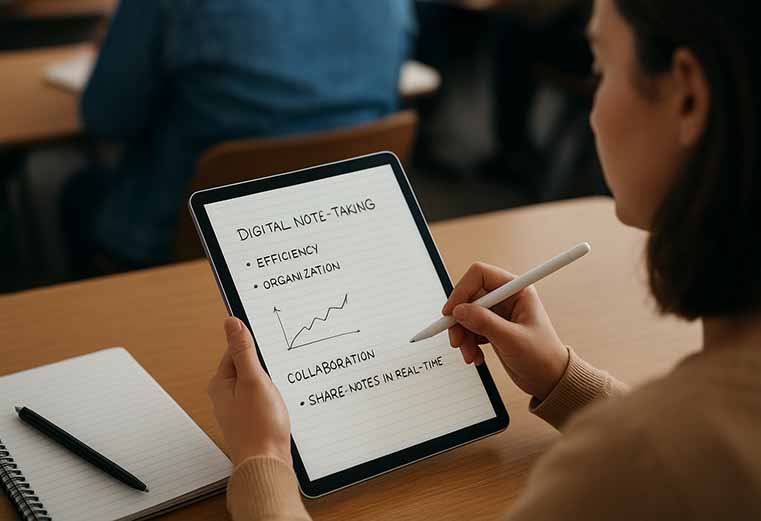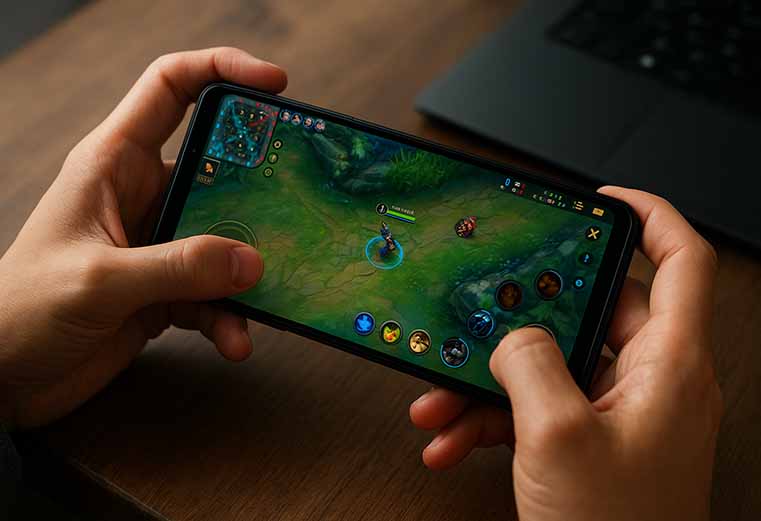
One of the biggest challenges students face is keeping track of notes, assignments, and reminders. In 2025, digital note-taking apps remain essential. Applications such as Evernote, Microsoft OneNote, and Notion allow learners to combine text, audio, and visuals in one place. Unlike traditional notebooks, these tools help categorize subjects, highlight important ideas, and integrate reminders directly into the study plan.
Students who rely on digital note-taking also benefit from synchronization across devices. This means they can start an outline on a tablet during class and finish it later on a laptop at home. For group work, shared notebooks make collaboration seamless, since everyone can contribute ideas in real time. Choosing the right platform depends on personal preference, but the goal remains the same: transforming scattered information into structured, easy-to-retrieve knowledge.

The internet is full of information, but not all of it is reliable. For serious academic work, students turn to research databases and digital libraries. Platforms like Google Scholar, JSTOR, and ResearchGate give access to peer-reviewed journals, credible studies, and case analyses that support essays and projects. By using filters and citation tools, learners save time and avoid the trap of relying on unverified sources.
Another growing trend in 2025 is the use of browser extensions that evaluate the credibility of articles. These tools check for publication dates, author credentials, and supporting evidence, allowing students to quickly judge whether a source is trustworthy. Students who invest time in mastering research platforms not only produce higher quality assignments but also build critical thinking skills that will help them beyond the classroom. For more curated academic resources, schools such as m.secundariababeque.edu.do provide portals that guide students toward recommended sources.
Group assignments are part of almost every academic journey. Coordinating schedules, dividing tasks, and tracking deadlines can be overwhelming without the right system. Project management platforms such as Trello, Asana, and ClickUp make teamwork less stressful. They allow students to assign responsibilities, track progress, and set automatic reminders. The visual layout of these tools also helps everyone stay on the same page, reducing misunderstandings.
Another advantage of project management tools is the integration with cloud storage services like Google Drive or Dropbox. Students can upload drafts, share presentations, and keep track of document versions. Since most platforms now include free plans for education, there is little excuse for miscommunication. By adopting these systems early, learners also gain practical skills that are highly valued in professional environments.
Time is often the scarcest resource for students. Between lectures, part-time jobs, and extracurricular activities, finding balance requires strong discipline. Free applications such as Todoist, Forest, and Google Calendar are designed to improve focus and reduce wasted hours. Todoist helps prioritize tasks by urgency, while Forest encourages productivity by gamifying focus sessions. Google Calendar ensures that deadlines, exams, and personal commitments do not overlap.
Many of these apps also include analytics that show how time is being spent. Reviewing weekly reports allows students to identify patterns such as time lost to distractions and make adjustments. With better scheduling, learners avoid the common problem of cramming everything at the last minute. Ultimately, the right time management tool is not about working harder, but about working smarter.
Beyond traditional coursework, free learning platforms empower students to explore new subjects. Websites such as Coursera, Khan Academy, and EdX provide courses taught by experts from top universities. Many of these courses offer certificates, giving students an advantage when applying for internships or jobs.
In addition, platforms that support interactive learning, like Duolingo for languages or Brilliant for problem-solving, make education engaging and fun. Students can progress at their own pace while tracking their growth. By blending formal education with these resources, learners expand their knowledge base and remain competitive in a rapidly changing world.

Dalam beberapa tahun terakhir, penggunaan smartphone tidak lagi sebatas komunikasi atau media...
Read More